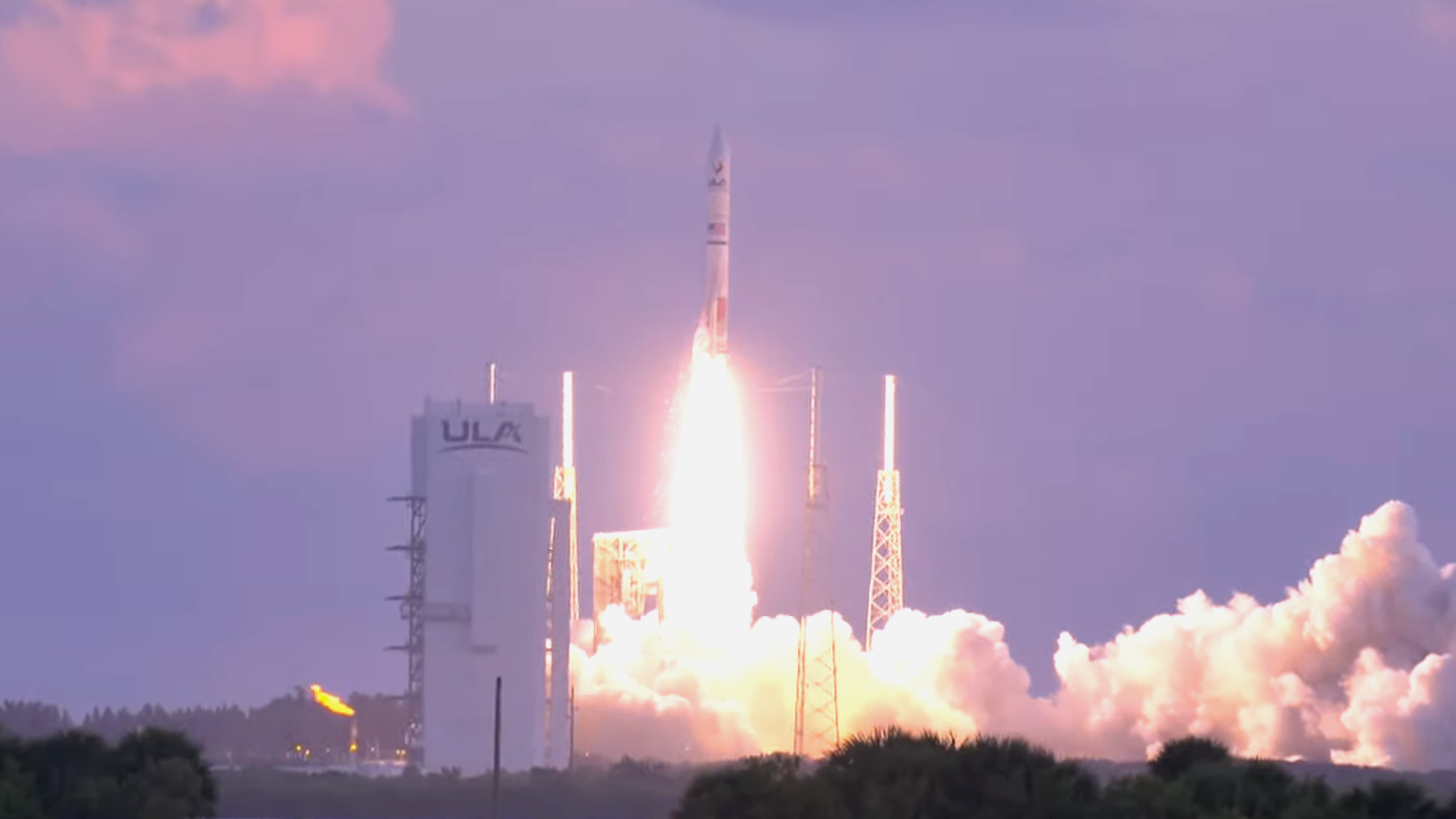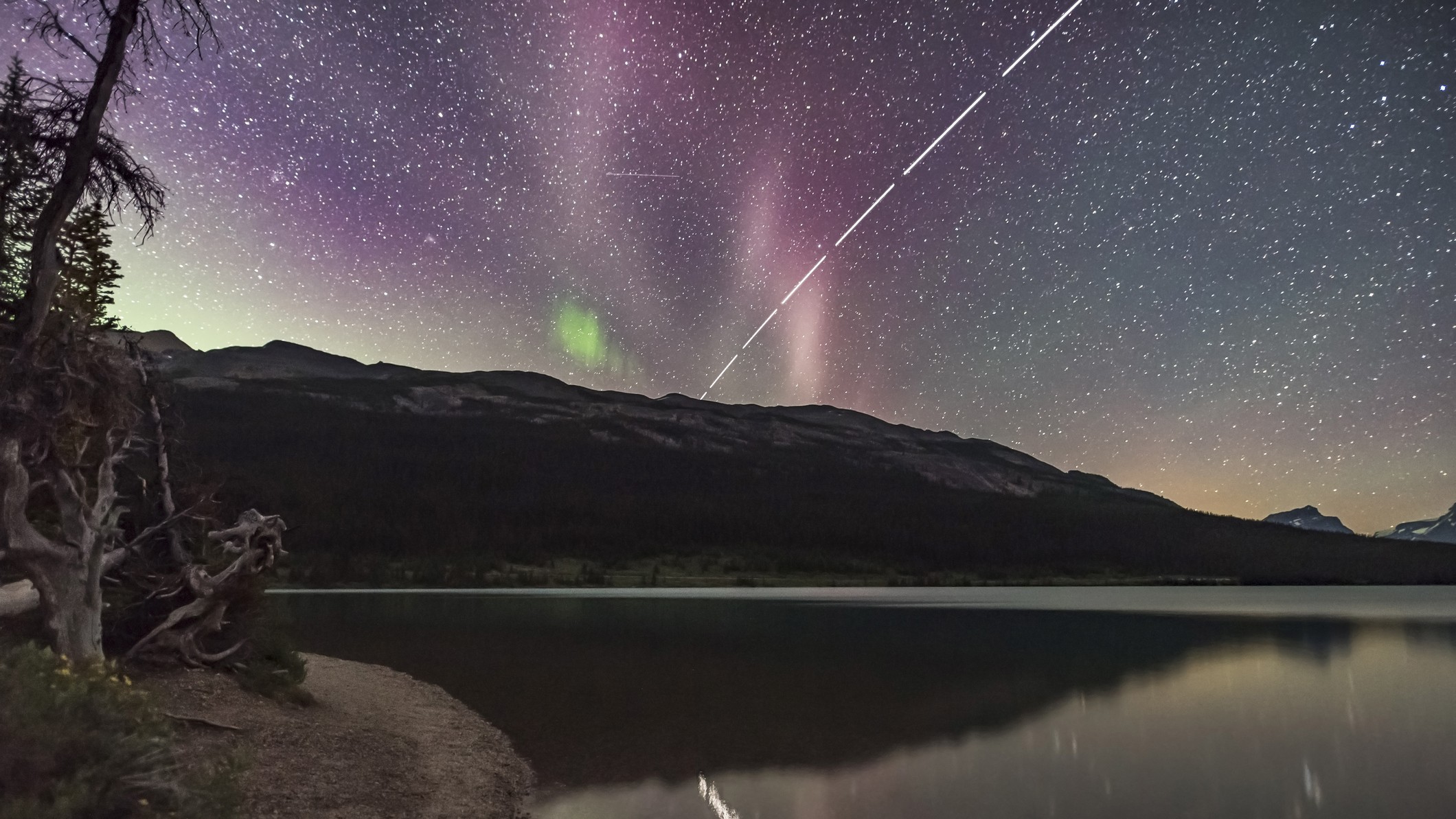ULA's new Vulcan Centaur rocket launches on 2nd test flight (video)
United Launch Alliance's (ULA) powerful new Vulcan Centaur rocket is two for two.
Vulcan Centaur, the successor to ULA's workhorse Atlas V, launched today (Oct. 4) at 7:25 a.m. EDT (1125 GMT) after a series of holds from Florida's Cape Canaveral Space Force Station, kicking off a key test flight called Cert-2.
ULA declared the flight a success, apparently keeping the new rocket on track to be certified for use on national security missions — a box that could be checked in the coming weeks, after ULA and the U.S. Space Force have had a chance to review data from the flight.
"I think we're all really excited to see that it's such a significant launch in terms of our certification and where we're going with Vulcan," Space Force program manager Megan Lepien said during the ULA launch livestream. "It was just a tremendous accomplishment from this team."
Vulcan Centaur flew for the first time this past January. That mission, called Cert-1, was a success, delivering the private Peregrine lunar lander to a highly elliptical moon-intercepting orbit as planned.
Peregrine didn't make it to the lunar surface, however; it suffered a propellant leak shortly after separating from the rocket's Centaur V upper stage and was guided back to Earth before getting destroyed in our atmosphere.
Breaking space news, the latest updates on rocket launches, skywatching events and more!
Cert-2 was supposed to be the first-ever flight of Dream Chaser, a robotic space plane built by the Colorado company Sierra Space. But the private vehicle wasn't ready in time for liftoff, so ULA changed course, putting an inert "mass simulator" and a set of the company's own rocket-monitoring instruments on the Vulcan Centaur instead of a customer payload.
This shift meant ULA had to foot the entire bill for Cert-2, whose price tag is in the "high tens of millions of dollars," ULA CEO Tory Bruno told reporters in a prelaunch briefing on Wednesday (Oct. 2).
Cert-2 "has literally one primary objective, which is to go fly a second time and have another success," Bruno added in Wednesday's briefing.
That objective was apparently achieved, as Vulcan Centaur seemed to perform well throughout the flight. The rocket ticked all the major boxes on schedule — jettisoning its two solid rocket boosters (SRBs) around two minutes after liftoff, for example, and acing stage separation about three minutes after that.
There was a burst of material from the rocket about 39 seconds after liftoff, as seen in the launch video. The cause was a failed nozzle on one of the SRBs, Bruno explained in a series of X posts after liftoff. But Vulcan Centaur was able to fly its planned flight profile nonetheless, he said.
"Rocket compensated, as designed. Nominal trajectory. Bullseye insertion," Bruno wrote in one such post.
The Centaur V upper stage conducted two long engine burns as planned, the second ending about 35 minutes after liftoff. That milestone brought the main Cert-2 mission to an end, though ULA planned to do a little more work after that as well.
"We're going to conduct a few maneuvers with the upper stage, just to learn better how it behaves in those types of maneuvers, and also to give us more time with the [onboard] experiments," Bruno said in Wednesday's briefing.
Those maneuvers and experiments could inform the development of a future version of the Centaur V that's capable of operating in the final frontier for much longer than an hour or so, which Bruno said is the current norm for an upper stage.
"We think it's possible to take this to months, and that's a game-changer," he said. "What that would allow us to do is have an in-space transportation capability for in-space mobility and servicing and things like that."
If all goes according to plan, the Centaur V will head to a disposal orbit around the sun after completing those extra maneuvers and experiments, Bruno said via X on Wednesday. The stage will then be "passivated" — drained of propellant and battery power until it's an inert hunk of metal.
ULA will analyze the Cert-2 flight data, then hand that information over to Space Force officials who will perform their own examination, Bruno said. Certification could follow relatively soon after.
"If the mission is very clean, like the Cert-1 mission, that goes pretty quickly," Bruno said on Wednesday. "I mean, that'll be done in weeks, not months."
ULA is gearing up for that short timeline. The company hopes to launch two national security missions, known as USSF-106 and USSF-87, with Vulcan Centaur before the end of the year. And, if all goes according to plan, the new rocket will be a big part of a busy 2025 for ULA. The company aims to launch 20 missions next year, Bruno said, half of them with Vulcan Centaur and half with the still-active Atlas V.
One of those Vulcan Centaur flights will likely loft the space plane that was originally supposed to fly today.
"We have room in the 2025 manifest for Dream Chaser," Bruno said on Wednesday. "It's just a matter of, you know, when they're ready to go, and then we'll work with the range and the other customers and find a slot for them, and we'll get them up there."
Editor's note: This story was updated at 12:50 p.m. ET with information about the SRB nozzle failure from Tory Bruno.

Michael Wall is a Senior Space Writer with Space.com and joined the team in 2010. He primarily covers exoplanets, spaceflight and military space, but has been known to dabble in the space art beat. His book about the search for alien life, "Out There," was published on Nov. 13, 2018. Before becoming a science writer, Michael worked as a herpetologist and wildlife biologist. He has a Ph.D. in evolutionary biology from the University of Sydney, Australia, a bachelor's degree from the University of Arizona, and a graduate certificate in science writing from the University of California, Santa Cruz. To find out what his latest project is, you can follow Michael on Twitter.


